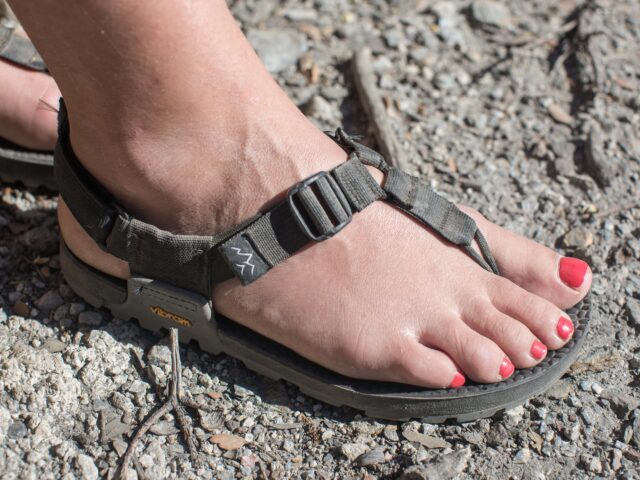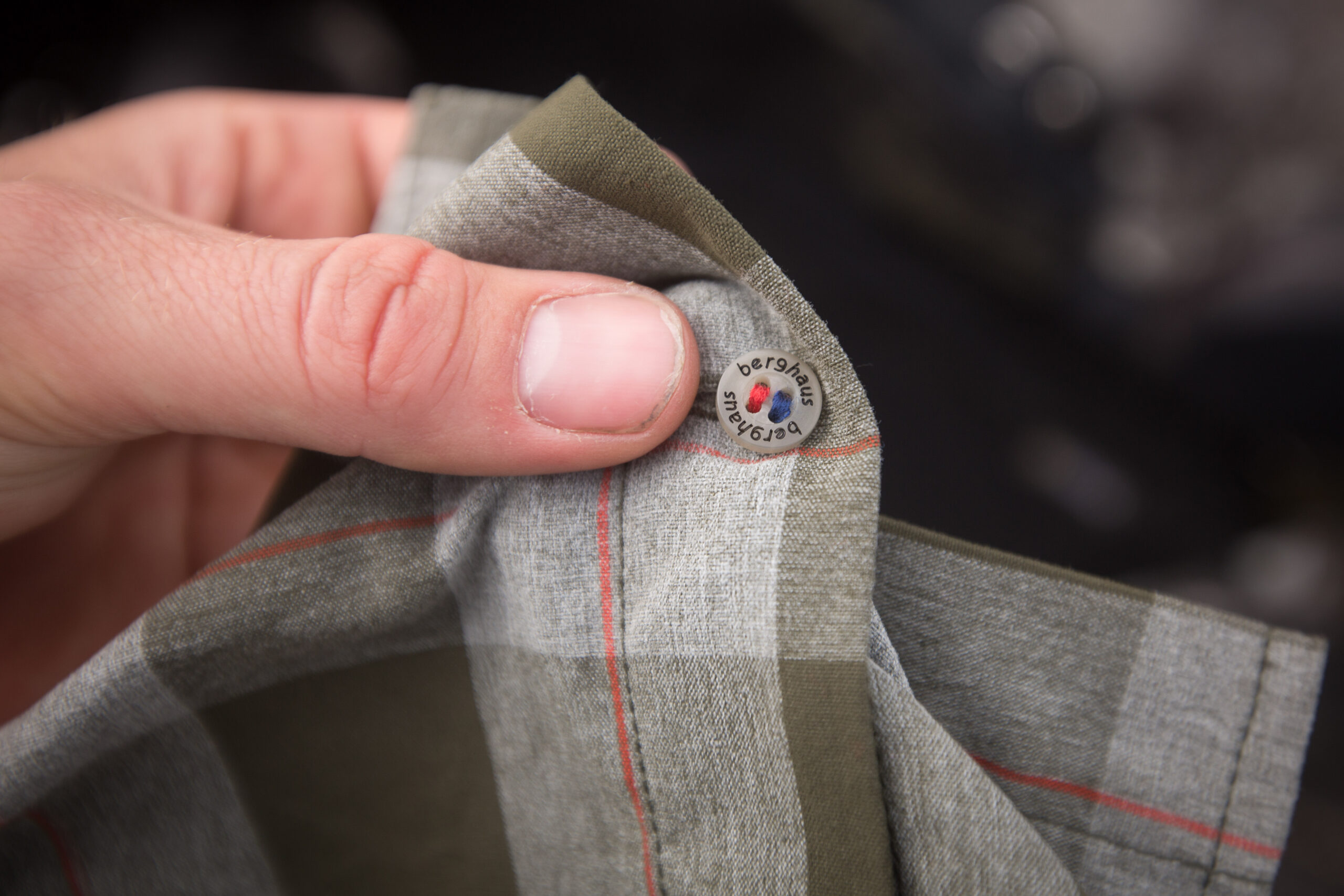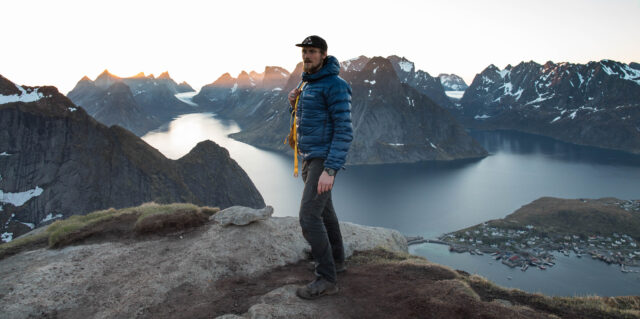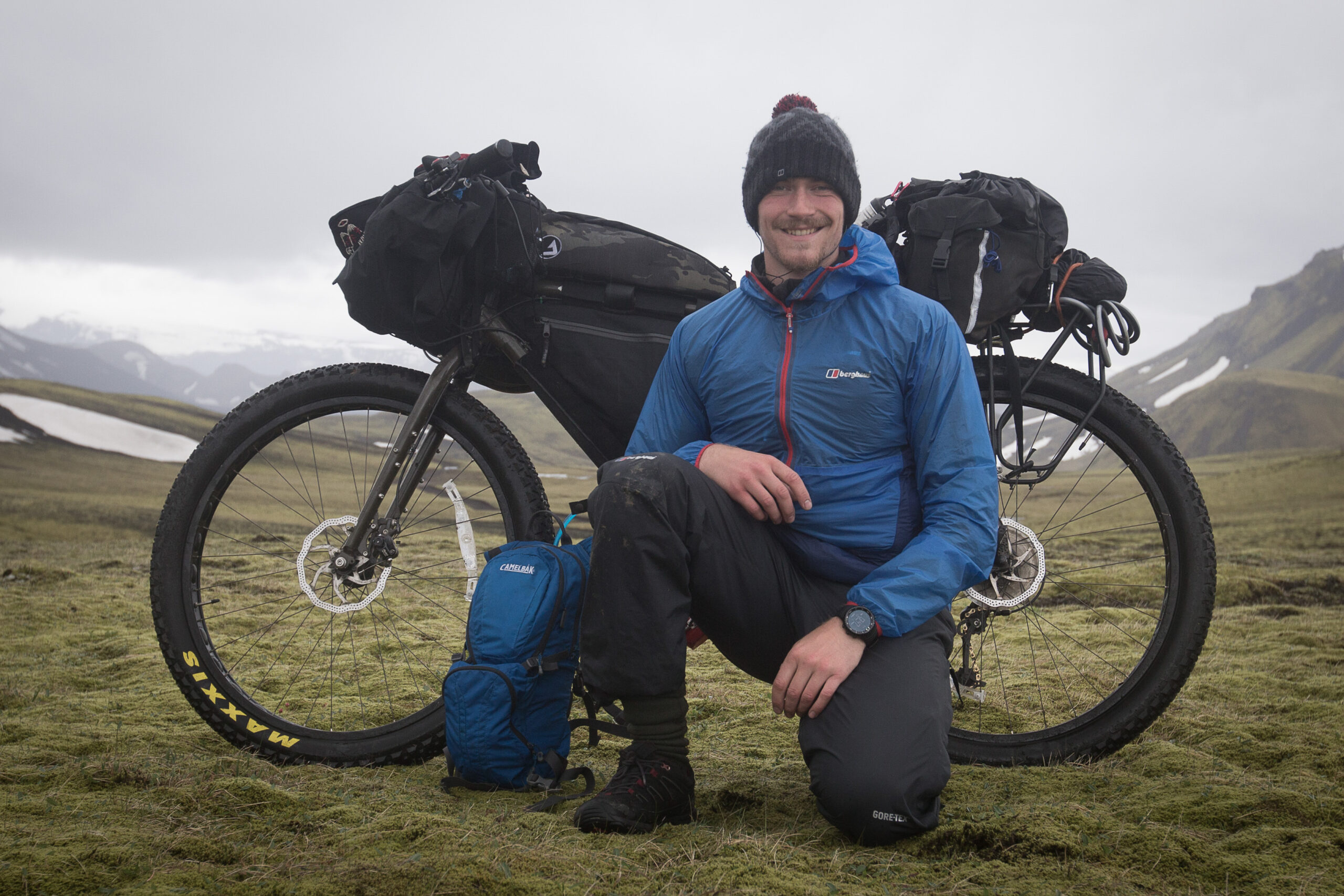Well, look what the cat dragged in—the ‘Jack Mac’ signature look. Make no mistake, when it comes to clothing, I take my styling cues from Stig of the Dump. I appreciate fashion and style, but honestly, I’m generally too busy spending every penny I earn on my hobbies or experiences.

I make an active effort to source as much clothing as possible from charity shops (money goes to a good cause, you generally get better quality for less, and it’s a great form of recycling). However, when it comes to expedition gear, I’ll spend what’s necessary to ensure my clothing is fit for purpose. If you’re planning an adventure, I’d recommend setting aside a little more money and getting quality products that offer adequate functional performance. That said, I want adventure to be accessible, and I recognise outdoor clothing is expensive. Thus I advise getting online and sourcing quality used gear (I frequently do this and pick-up premium equipment for the same price as cheap/inferior alternatives). Let’s take a look at some of my favourite clothing essentials for bikepacking (and many other outdoor adventures) from the ground up—literally.

*Full disclosure: Berghaus often sends me gear to support my adventures. This relationship came about organically after they recognised I was wearing their products on my expeditions. Hence, after almost 10 years of working together, my outfits are dominated by their garments. That said, I’m not contractually obligated, nor do I offer exclusivity to the brand. I just genuinely rate their equipment. Whilst my personal choice is Berghaus, I’ll be offering great alternatives for each category.
Footwear
Bedrock Sandals are a recent addition to my bikepacking setup but have quickly become one of my favourite possessions. This is a scenario where I’d heard so many good things that I just had to get my hands on some. My girlfriend, Amber, being her usual thoughtful self gifted me a pair, and so began my sandal infatuation. We purchased the 3D Cairn Pro model, designed for ‘wet and slippery missions…the ultimate adventure sandal’. The Cairn, assembled in the USA, integrates a Hook-Heel strap, Vibram Megagrip outsole, three adjustment zones, and a molded 3D footbed (it’s also worth noting that one percent of each sale goes to environmental non-profits). Specifications aside, all you need to know is these sandals are incredible. I was living in the Arctic when my Cairn Pro’s arrived and subsequently didn’t put them on properly until I landed in Spain for a two-week bikepacking adventure. I decided from day one that I’d attempt to wear them for the entirety of the trip, and that’s exactly what I did. There was a slight adjustment period as I got used to the hair cord toe-post, but after two weeks on the bike, I concluded these were the most versatile footwear I’d ever owned. The Bedrocks are suited to all-day riding, hike-a-biking, hanging around camp, down the beach, scrambling up rocks, and just about everything in-between. Moreover, the cool breeze on your feet in hot climates is a wonderful feeling.


If you’re travelling at any sort of speed, you must be mindful that your feet, especially your toes, have little protection if you come off the bike or make contact with the floor. Personally, on fast sections, you’d be wise to switch out for some proper shoes. This moves me on to my Berghaus Explorers.
The Berghaus Explorers come in two styles: a shoe (Explorer FT Active), and a boot (Explorer Trek). These are fast hike footwear designed primarily to offer speed and comfort on technical terrain. There’s not a huge real-world difference between the two models, and overall, I prefer the added ankle support of the boot. The Explorers integrate the same breathability as a sports shoe, incorporating the technology found in a hiking boot.

Furthermore, a Gore-Tex membrane ensures they’re completely waterproof whilst still allowing your feet to breathe. I’ve worn these shoes on every bikepacking trip over the past six years, most days at work, and recreationally. They’re well-fitting, lightweight, supportive, and durable. The Explorer’s Vibram Opti-Stud sole, combined with my studded Ride ISSI Stomp pedals, provides a fantastic connection with the bike and the confidence to tackle challenging trails.

$161/$196 (Berghaus, Explorer Shoe/Boot) | berghaus.com
$120 (Bedrock Sandals, Cairn Pro II) | bedrocksandals.com
Alternatives: Crocs, Swiftwater Mesh Deck Sandal (crocs.com); Shimano, SD5 Sandals (bike.shimano.com); The North Face, Men’s Ultra Fastpack IV Futurelight Mid Boots (thenorthface.co.uk)
Socks
I’m not sure whether it’s turning 30 or not, but I’ve suddenly developed an irrational love of quality socks. It’s a naughty habit I’m trying to keep to myself, shielding my phone as I deviously peruse high-quality merino options. In the old days, I’d stuff my saddlebag with a large handful of cheap socks. But in recent years, I’ve transitioned to fewer pairs of superior quality (and yes, that’s the most upper-class thing I’ve ever said, forgive me). The truth is, merino wool is a great performer compared to synthetic materials and helps prevent your feet from getting sweaty, offers cushion, and is antimicrobial, so it’s less smelly. Nonetheless, most quality socks also feature some synthetic material to ensure quick drying and to improve durability.

On recent rides, I’ve carried just three or four pairs of premium socks, even on extended rides, and washed them as I went along. I have chosen the Quoc Extra Fine Merino Tech Wool Socks and Surly Merino Tall Socks (in colder climates, I’ll always take one thicker wool option). Lastly, if I’m planning a ride in excessively wet conditions, I pack SealSkinz Waterproof Socks, which allow you to trudge through streams and deep bogs with dry feet long after your shoes have been compromised.
$33 (Quoc, Merino Tech Wool Sock) | quoc.cc
$30 (Surly, Merino Tall Socks) | surlybikes.com
$45 (Sealskinz, Waterproof All-weather Mid-length Sock) | sealskinzusa.com
Alternatives: Wigwam, Merino Lite Hiker (wigwam.com); Patagonia, Lightweight Merino Performance Crew Socks (patagonia.com); Alpkit, Rana Waterproof (alpkit.com)
Shorts
I pack a set of padded undershorts, alongside a baggy mountain bike (MTB) option, for most rides. I wear these in combination but always remove the padded undershorts when I get to camp. In hotter countries, I’ll leave the MTB shorts and just carry some loose-fitting swim shorts (they’re cheap, compress small, are quick-drying, and of course, ensure you’re swim-ready). At this point, I’d usually say how much I love a given product, but I’m actually in the process of updating mine. I own a pair of Muddy Fox Padded Undershorts and a set of Giro MTB Shorts, but both need replacing (and I think there are better options, see alternatives below).

$35 (Muddyfox, Cycling Shorts) | muddyfox.com
$110 (Giro, Men’s Arc Short with Liner) | giro.com
Alternatives: Alpkit, Strada (alpkit.com); Patagonia, Dirt Roamer Bike Shorts (patagonia.com); Fox, Alpha Cargo Shorts (foxracing.com)
Trousers/Pants
I’ve only taken one pair of pants bikepacking over the last 10 years, and they’re the Berghaus Paclite Gore-Tex Overtrousers. It is a premium product, and the price reflects this, but I cannot recommend them enough. I rarely take any form of trousers on a bike tour because I feel more comfortable riding in shorts (in cold climates, I’ll also wear full-length compression leggings and high socks). However, off the bike, you often get chilly, and a pair of trousers is ideal. The Paclites only weigh 228 grams (8 ounces), are waterproof, have zips for ventilation, an elasticated waist, and they’re loose-fitting (which makes them nice to ride in and for lounging around camp). Furthermore, they compress into their own very compact mesh stuff sac. I’ve ridden countless miles in torrential rain, and the Paclites have kept me bone dry.

$168 | berghaus.com
Alternatives: Montane, Minimus Waterproof Pants (montane.com); Patagonia, Torrentshell 3L Pants (patagonia.com); Endura, Hummvee Waterproof Trouser (endurasport.com)
Base Layers
I largely wear Surly T-shirts because they’re soft, light, and designed specifically for cycling (i.e., they hang down over your hips, ensuring your lower back remains covered, even when hunkering low on the bike). I also pack my Berghaus Explorer Long Sleeved Shirt, which is designed specifically for strenuous outdoor activities. This shirt features UPF 50 fabric that protects you from the sun, Argentium technology that reduces sweat/odours, chest pockets (one that’s zipped), and weighs just 240 grams (just over 8 ounces, size L). There’s a classic mountaineering aesthetic to this product, which, combined with the quality, harkens back to the company’s founding in 1966. I’m a sucker for gear that integrates timeless alpine design with the latest in exploration garment technology.

$28 (Surly T-Shirt) | surlybikes.com
$53 (Berghaus Explorer Long Sleeved Shirt 3.0) | berghaus.com
Alternatives: Rapha, Men’s Explore Technical T-Shirt (rapha.cc); Pedaled, Kyoto Gravel T-Shirt (pedaled.com); Kitsbow, Icon Shirt Relaxed Athletic Fit (kitsbow.com)

Mid-layers
Generally, I won’t pack a thick jumper/hoody on a bikepacking trip unless it is somewhere very cold, as it’s usually overkill (and bulky to store). The combination of a base layer, mid-layer, gilet (vest), and down jacket is ordinarily enough insulation unless you plan to venture somewhere with sub-zero conditions. If the temperature drops below freezing, I’ll also incorporate my hyper-lightweight rain jacket for extra warmth.

Once off the bike, I can always get into my sleeping bag, which is rated to sub-zero temps. I ensure my mid-layers are technical, lightweight, long-sleeved, warm, and breathable. Berghaus offers a premium range of garments for exploration known as their Extrem range, and ultimately, these products are configured to be as light as possible without compromising performance. I’ve owned the Extrem Smoulder Insulated Hoody for the past five years, and it’s been the most versatile mid-layer I’ve owned. The hoody features the company’s multi-zone, body-mapped technology, which puts thicker insulation where you need it whilst considering your body’s thermo-regulatory system, incorporating ventilation in the most effective areas. The fabric is unlike anything else I’ve owned and is called Polartec PowerDry, which has a bi-component knit of two fibres sewn together (the larger fibres lift perspiration from the skin, and the smaller fibres absorb it, keeping you dry). Crucially, this mid-layer provides a high level of insulation for the weight (347 grams, 12 ounces), and is also easily compressed. I wear the Smoulder frequently, as it’s perfect for days when a tee isn’t quite enough, but a jacket would be too hot. Moreover, it’s great for layering up in the sleeping bag, especially with the integrated hood and face cover. The hood is made to fit under a helmet and is, therefore, a great option for bikepacking.
$140 | berghaus.com
Alternatives: Surly, Men’s Long Sleeve Jersey (surlybikes.com); Pedaled, Essential Merino Base Layer (pedaled.com); Alpkit, Kepler Velo Long Sleeve (alpkit.com)
Jacket
I’ve had a number of Berghaus Extrem Jackets, and they’ve all been excellent. You can’t get a better warmth-to-weight ratio than a premium down jacket, whether from Berghaus, The North Face, Patagonia, Fjällräven, Rab, or similar. The warmth you experience from something so light/compressible seems to defy logic, which is why they dominate the exploration sector. I’m currently sporting the Berghaus Extrem Ramche 2.0, and that has seen me through two years of adventures in the Arctic Circle. The Ramche’s primary objective is ‘delivering heat in the most efficient, lightweight package possible’ (just 452 grams, 16 ounces). This jacket, like the Smoulder Hoody, features the company’s body-mapping technology to focus insulation where you need it most.

Moreover, the 7-denier outer fabric is durable, breathable, and windproof. A down jacket is the perfect choice for any trip when travelling light, and keeping warm is essential. It compresses ultra-small and can be used to protect packed electronics from rough terrain or cold temperatures. The Ramche’s 7-denier fabric may be durable, but like my sleeping bag, it certainly isn’t invincible to rips, so be sure to carry some repair patches. On colder rides, I also pack the Berghaus Kyberg Polartec Fleece Gilet, as this keeps your core warm whilst also allowing unobstructed ventilation to your arms.

$426/$69 (Berghaus Extrem Ramche 2.0 Down Jacket/Kyberg Polartec Gilet) | berghaus.com
Alternatives: Fjällräven, Expedition Pack Down Hoodie (fjallraven.com), Rab, Men’s Microlight Alpine Down Jacket (rab.equipment); The North Face, Men’s Stretch Down Gilet (thenorthface.co.uk)
Rain Jacket
Heavy rain can ruin a bikepacking trip if you’re not prepared, but with quality waterproof jackets, you can remain warm and dry and continue riding in relative comfort. At the time of its release, the Berghaus Vapourlight Hyper Smock 2.0 Waterproof Jacket was the lightest of its kind at just 75 grams (2.6 ounces). As a result, the stuff sac is smaller than a tennis ball and stores effortlessly on the bike. I’ve worn it in a number of wet climates, and despite torrential downpours, remained dry. This jacket is also an excellent windbreak, which, combined with its figure-hugging fit, means it’s remarkably warm (I often rode in cold climates with just the Vapourlight and a tee, just be sure to utilise the ventilation zips, or else things get sweaty).


$100 | berghaus.com
Alternatives: Alpkit, Gravitas (alpkit.com); Rapha, Men’s Core Rain Jacket II (rapha.cc); Montane, Unisex Podium Waterproof Pull-On Jacket (montane.com)
Gloves
I purchase all my gloves, whether for cycling or general wear, from Sealskinz; they’re the best in my experience. However, in warmer weather, I’ve been using a pair of Alpkit’s Cycling Mitts, which have performed well for the past two years (these have since been replaced by their Rhythm Gloves).


$70 (Sealskinz, Waterproof All-weather MTB Glove) | sealskinz.com
$28 (Alpkit, Rhythm Glove)| alpkit.com
Alternatives: Terra Nova, Quest Glove (terra-nova.co.uk); Le Col, Cycling Mitts (lecol.cc); Altura, Progel Mitt (altura.co.uk)
Headgear
If I’m riding the bike, I’m wearing a helmet unless I’m travelling slowly or battling a gruelling climb. I purchased the Bontrager Quantum MIPS Bike Helmet for bikepacking, and I love it. This helmet weighs just 410 grams (14.5 ounces), features multi-directional impact protection (MIPS), is extremely comfortable, incorporates a sun visor, and has great ventilation. On the occasion sun protection is paramount, or I’m traveling slow, I’ll sport a hand-stitched cap made by UK artist Matt Waudby. In the wintertime, I’ll always bring along a Berghaus Beanie or similar item.

$49 (Matt Waudby, Hand-stitched Cap) | mattywaudby.com
$22 (Berghaus, Ulvetanna Reversible Beanie | berghaus.com
Alternatives: Surly, Steel Trucker Cap (surlybikes.com); Cotopaxi, Adventure Tech 5-Panel Hat (cotopaxi.com); Patagonia, Wool Pom Beanie (patagonia.com)
Our No Compromise Clause: We carefully screen all contributors to make sure they are independent and impartial. We never have and never will accept advertorial, and we do not allow advertising to influence our product or destination reviews.


